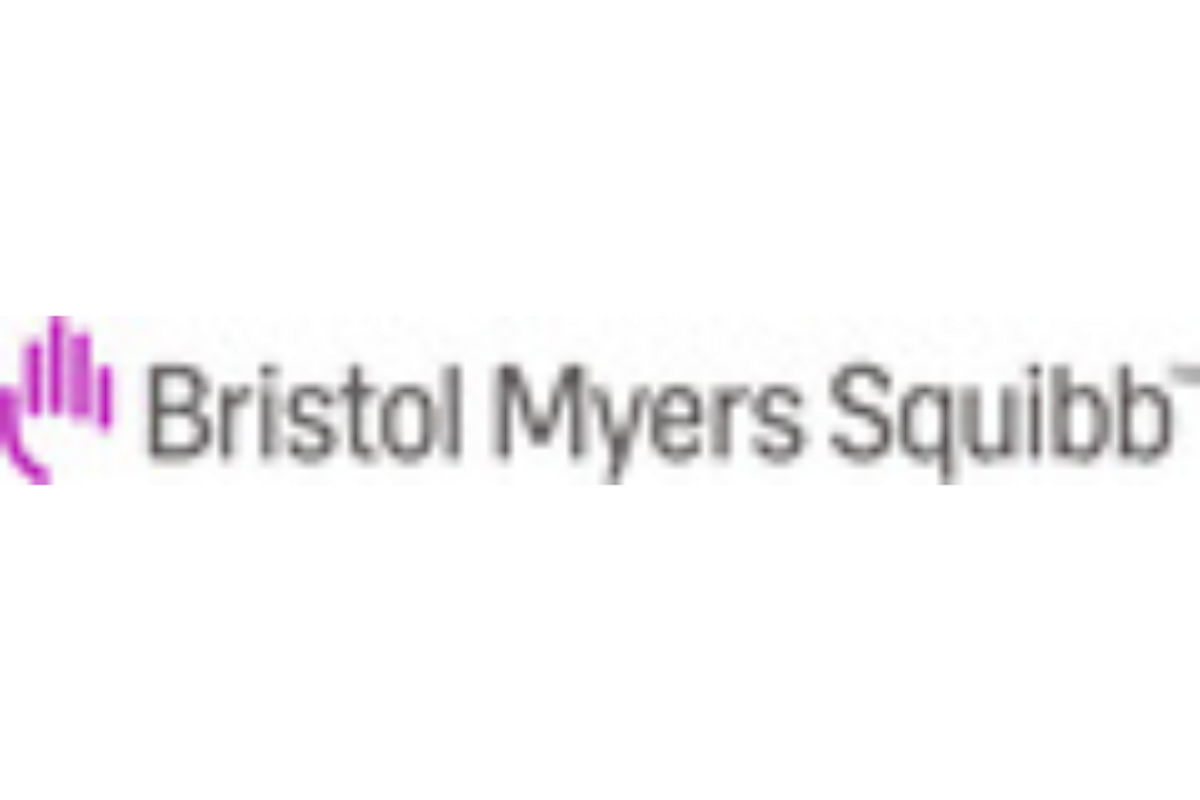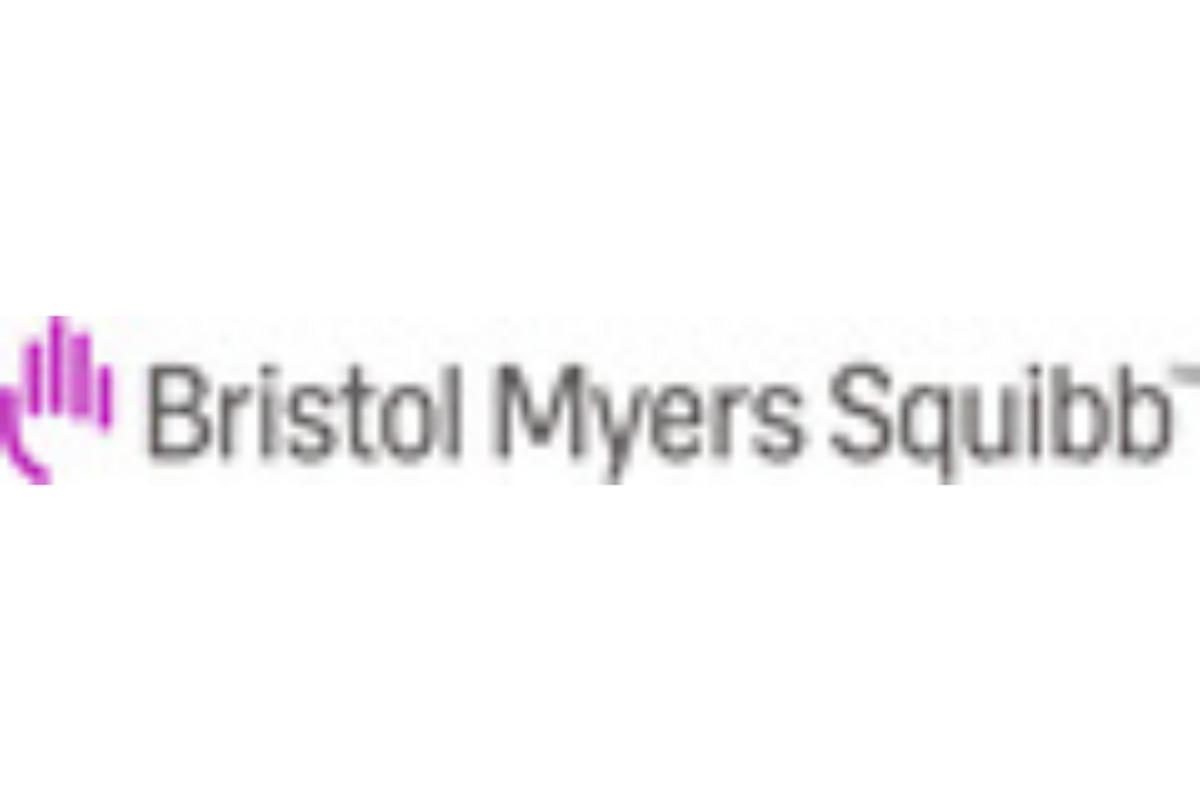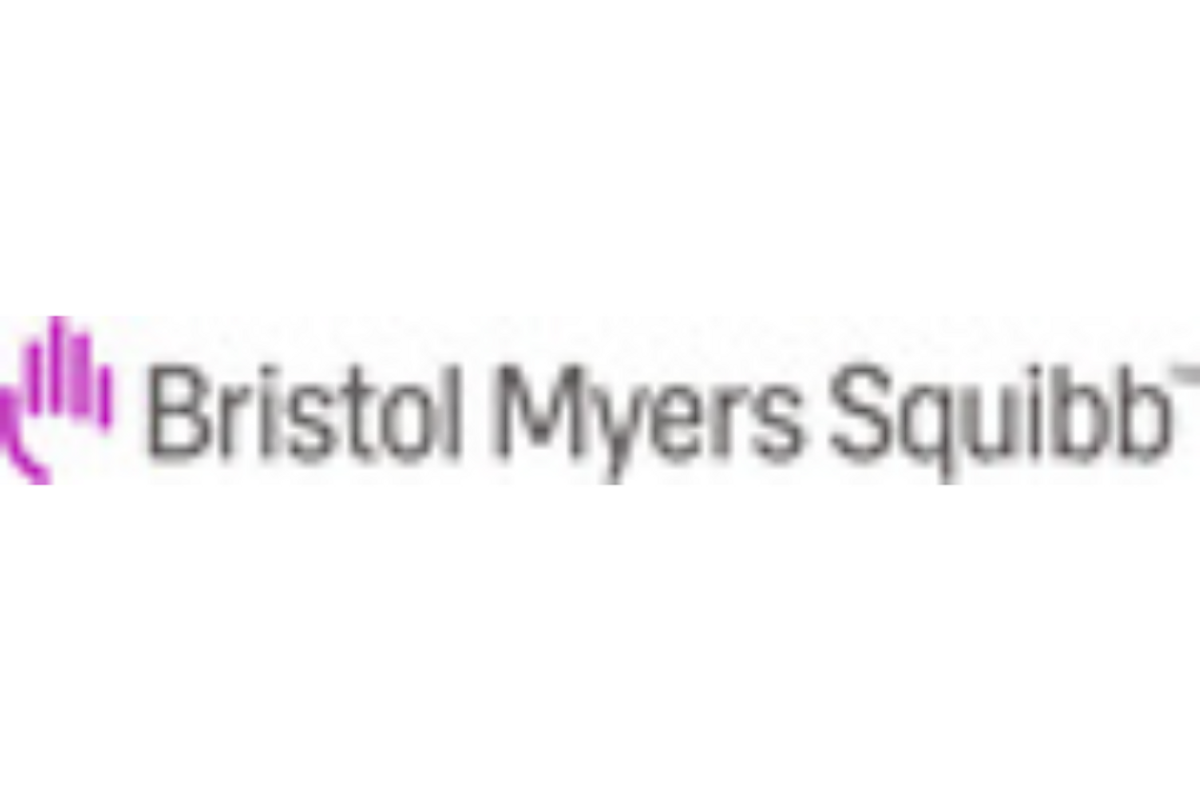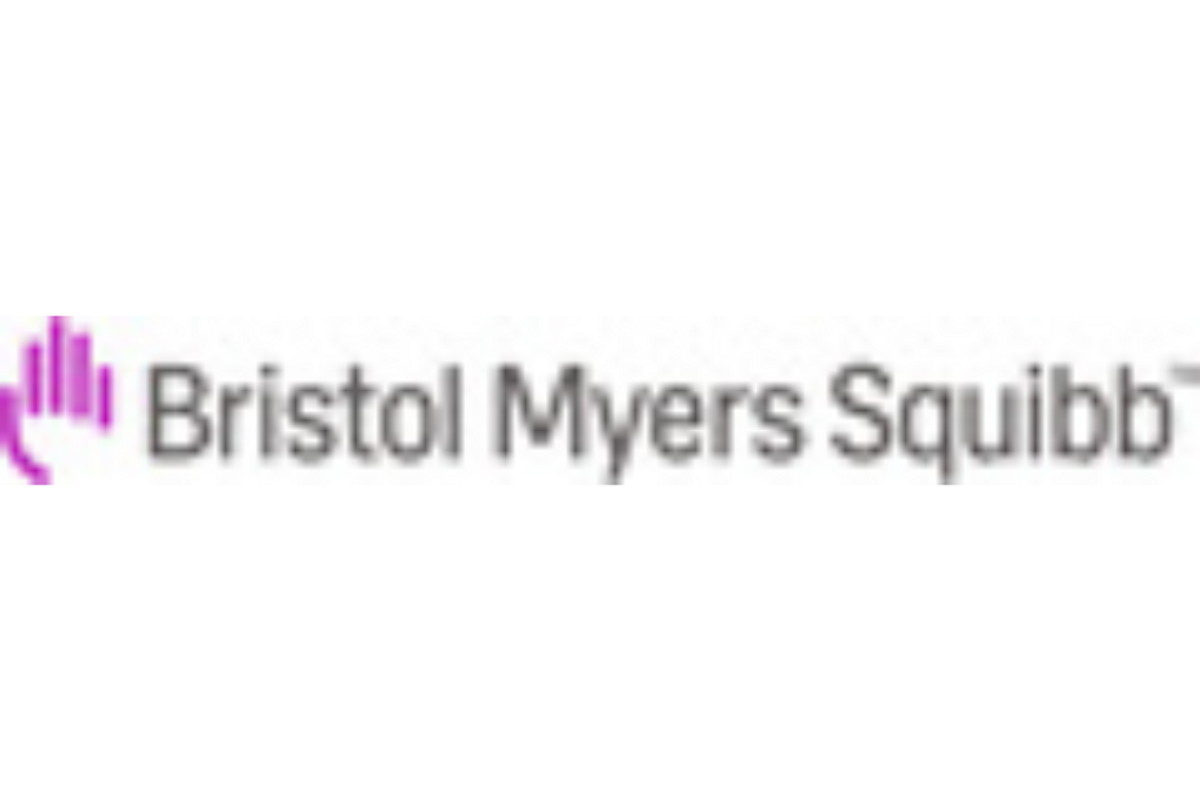Breyanzi represents a differentiated CAR T cell therapy with demonstrated rapid and durable complete responses and a manageable safety profile
Approval of Breyanzi is based on results from TRANSCEND WORLD, and TRANSCEND NHL 001, the largest pivotal trial of patients with relapsed or refractory large B-cell lymphoma after at least two prior therapies, including those with a broad range of histologies and high-risk disease
Approval marks Bristol Myers Squibb's second CAR T cell therapy approved in the EU, underscoring commitment to bringing the transformative potential of CAR T cell therapies to more patients
Bristol Myers Squibb (NYSE: BMY) today announced that the European Commission (EC) has granted Marketing Authorization for Breyanzi (lisocabtagene maraleucel; liso-cel), a CD19-directed chimeric antigen receptor (CAR) T cell immunotherapy, for the treatment of adult patients with relapsed or refractory (R/R) diffuse large B-cell lymphoma (DLBCL), primary mediastinal large B-cell lymphoma (PMBCL), and follicular lymphoma grade 3B (FL3B) after two or more lines of systemic therapy. The Marketing Authorization approves Breyanzi for use in all European Union (EU) member states.*
Breyanzi is delivered as a personalized treatment via a single infusion. Treatment with Breyanzi has demonstrated sustained complete responses in a high proportion of patients with R/R large B-cell lymphoma (LBCL) and a manageable and differentiated safety profile.
"Advancing cell therapies is a significant part of our commitment to deliver innovative and potentially curative treatments in order to transform the lives of people living with cancer," said Samit Hirawat, M.D., chief medical officer, Bristol Myers Squibb. " Breyanzi addresses an ongoing unmet need for patients in Europe battling relapsed or refractory large B-cell lymphoma who have few treatment options that provide long-term remission. The EC approval of Breyanzi is a significant step towards bringing the novel and personalized science of CAR T cell therapies to more patients around the world."
DLBCL is an aggressive blood disease accounting for one out of every three non-Hodgkin lymphoma (NHL) cases diagnosed, making it the most common form of NHL. 1 More than two-thirds of patients with DLBCL will not respond to or will relapse following second-line treatment and, historically, response rates for these patients are low with complete response rates ranging from 2% to 15%. 2 Despite recent treatment advancements, new options offering long-term clinical benefits are still needed.
"In DLBCL, the goal of treatment is to provide patients with durable remission. However, for patients whose disease relapses or doesn't respond to initial therapy, there are limited treatment options that provide long-term disease control," said Ulrich Jäger, M.D., hematologist at the Medical University of Vienna / Vienna General Hospital and investigator for TRANSCEND WORLD. "Liso-cel is an exciting new and differentiated option for patients in Europe with relapsed or refractory large B-cell lymphoma, offering those with a historically poor prognosis a potentially curative treatment option, and results from TRANSCEND NHL 001 and TRANSCEND WORLD reinforce liso-cel as a valuable treatment for a broad range of patients with DLBCL who have received at least two prior therapies."
The Marketing Authorization is based on results from the TRANSCEND NHL 001 study evaluating Breyanzi in adult patients with R/R DLBCL, PMBCL and FL3B, including those with a broad range of histologies and high-risk disease. In 216 patients treated with Breyanzi and evaluable for efficacy, 73% of patients achieved a response (95% CI: 67%-78.5%), including 53% who had minimal or no detectable lymphoma remaining following treatment (complete response [CR]; 95% CI: 47%-60%). Median duration of response was 20.2 months in all responders (95% CI: 8 – NR), and for patients who achieved a CR, median duration of response was 26.1 months (95% CI: 23 – NR).
The safety of Breyanzi is based on pooled data from 314 patients with R/R LBCL treated with Breyanzi within a dose range of 44 to 120 x 10 6 CAR+ viable T cells across four studies (TRANSCEND NHL 001, TRANSCEND WORLD, PLATFORM and OUTREACH). Any grade cytokine release syndrome (CRS) occurred in 39% of patients, 3% of whom experienced Grade 3 or 4 CRS. The median time to onset was five days (range: 1 to 14 days) and the median duration was five days (range: 1 to 17 days). Neurologic toxicities (NT) occurred in 26% of patients receiving Breyanzi, including Grade 3 or 4 in 10% of patients. The median time to onset of the first NT event was nine days (range: 1 to 66 days); 99% of all NT occurred within the first eight weeks following Breyanzi infusion. The median duration of NT was 10 days (range: 1 to 84 days).
The most common Grade > 3 adverse reactions were neutropenia, anemia, thrombocytopenia, leukopenia, infection with an unspecified pathogen and febrile neutropenia. For full details on the Special Warnings and Precautions for Use and Adverse Reactions (including appropriate management), please refer to the EU Summary of Product Characteristics (SmPC).
Bristol Myers Squibb offers various programs and resources to address the needs of patients and caregivers and help support access to therapies, including Breyanzi.
*Centralized Marketing Authorization does not include approval in Great Britain (England, Scotland and Wales).
About TRANSCEND NHL 001
TRANSCEND NHL 001 is an open-label, multicenter, pivotal Phase 1 study conducted in the U.S. to determine the safety, antitumor activity and pharmacokinetics of Breyanzi in patients with R/R LBCL, including DLBCL, high-grade B-cell lymphoma (HGL), PMBCL and FL3B. The primary outcome measures included treatment-related adverse events, dose-limiting toxicities and objective response rate. Key secondary outcome measures included complete response rate, duration of response, progression-free survival and overall survival. The TRANSCEND program is a broad clinical program evaluating Breyanzi in multiple hematologic indications and treatment lines.
About TRANSCEND WORLD
TRANSCEND WORLD is a single-arm, multi-cohort, multicenter, Phase 2 study to determine the efficacy and safety of Breyanzi in patients with aggressive B-cell non-Hodgkin lymphoma (NHL). The primary outcome measure was overall response rate. Secondary outcome measures included safety, complete response rate, event-free survival, progression-free survival, overall survival, duration of response, pharmacokinetics and health-related quality of life. The study was conducted in Europe and Japan.
About Large B-Cell Lymphoma
Diffuse large B-cell lymphoma (DLBCL) is a rapidly growing, aggressive disease and the most common form of non-Hodgkin lymphoma (NHL), accounting for one out of every three cases diagnosed. 1 More than two-thirds of patients with DLBCL will not respond to or will relapse following second-line treatment. For patients who relapse or do not respond to initial therapies, conventional treatment options that provide durable remission are limited and median life expectancy is about six months, leaving a critical need for new therapies. 2,3
Follicular lymphoma (FL) is the most common indolent lymphoma accounting for approximately 20% of NHL cases. 4 Although most patients respond to initial treatment, FL typically recurs and becomes more difficult to treat after each relapse. 5 In some cases, FL can be aggressive – known as FL3B – or change into DLBCL. 6 Primary mediastinal large B-cell lymphoma (PMBCL) is a rare subtype of NHL that occurs most often in adolescents and young adults, with poor outcomes for patients with relapsed or refractory disease. 7
About Breyanzi
Breyanzi is a CD19-directed chimeric antigen receptor (CAR) T cell therapy with a defined composition and 4-1BB costimulatory domain. Breyanzi is administered as a defined composition to reduce variability of the CD8 and CD4 component dose. The 4-1BB signaling domain enhances the expansion and persistence of the CAR T cells . In the EU, Breyanzi is administered via a single infusion containing 100 × 10 6 CAR+ viable T cells (consisting of a target 1:1 ratio of CD8+ and CD4+ cell components) within a range of 44 to 120 × 10 6 CAR+ viable T cells.
Breyanzi is approved by the U.S. Food and Drug Administration for the treatment of adult patients with relapsed or refractory (R/R) large B-cell lymphoma after two or more lines of systemic therapy, including diffuse large B cell lymphoma (DLBCL) not otherwise specified (including DLBCL arising from indolent lymphoma), high-grade B-cell lymphoma, primary mediastinal large B-cell lymphoma, and follicular lymphoma grade 3B. Breyanzi is also approved in Japan for the treatment of patients with third-line plus R/R LBCL and follicular lymphoma.
Full European Summary of Product Characteristics for Breyanzi is available from the EMA website at www.ema.europa.eu .
U.S. Important Safety Information
BOXED WARNING: CYTOKINE RELEASE SYNDROME and NEUROLOGIC TOXICITIES
- Cytokine Release Syndrome (CRS), including fatal or life-threatening reactions, occurred in patients receiving BREYANZI. Do not administer BREYANZI to patients with active infection or inflammatory disorders. Treat severe or life-threatening CRS with tocilizumab with or without corticosteroids.
- Neurologic toxicities, including fatal or life-threatening reactions, occurred in patients receiving BREYANZI, including concurrently with CRS, after CRS resolution or in the absence of CRS. Monitor for neurologic events after treatment with BREYANZI. Provide supportive care and/or corticosteroids as needed.
- BREYANZI is available only through a restricted program under a Risk Evaluation and Mitigation Strategy (REMS) called the BREYANZI REMS.
Cytokine Release Syndrome (CRS)
CRS, including fatal or life-threatening reactions, occurred following treatment with BREYANZI. CRS occurred in 46% (122/268) of patients receiving BREYANZI, including ≥ Grade 3 (Lee grading system) CRS in 4% (11/268) of patients. One patient had fatal CRS and 2 had ongoing CRS at time of death. The median time to onset was 5 days (range: 1 to 15 days). CRS resolved in 119 of 122 patients (98%) with a median duration of 5 days (range: 1 to 17 days). Median duration of CRS was 5 days (range 1 to 30 days) in all patients, including those who died or had CRS ongoing at time of death.
Among patients with CRS, the most common manifestations of CRS include fever (93%), hypotension (49%), tachycardia (39%), chills (28%), and hypoxia (21%) . Serious events that may be associated with CRS include cardiac arrhythmias (including atrial fibrillation and ventricular tachycardia), cardiac arrest, cardiac failure, diffuse alveolar damage, renal insufficiency, capillary leak syndrome, hypotension, hypoxia, and hemophagocytic lymphohistiocytosis/macrophage activation syndrome (HLH/MAS).
Ensure that 2 doses of tocilizumab are available prior to infusion of BREYANZI. Sixty-one of 268 (23%) patients received tocilizumab and/or a corticosteroid for CRS after infusion of BREYANZI. Twenty-seven (10%) patients received tocilizumab only, 25 (9%) received tocilizumab and a corticosteroid, and 9 (3%) received corticosteroids only.
Neurologic Toxicities
Neurologic toxicities that were fatal or life-threatening, occurred following treatment with BREYANZI. CAR T cell-associated neurologic toxicities occurred in 35% (95/268) of patients receiving BREYANZI, including ≥ Grade 3 in 12% (31/268) of patients. Three patients had fatal neurologic toxicity and 7 had ongoing neurologic toxicity at time of death. The median time to onset of the first event was 8 days (range: 1 to 46 days). The onset of all neurologic events occurred within the first 8 weeks following BREYANZI infusion. Neurologic toxicities resolved in 81 of 95 patients (85%) with a median duration of 12 days (range: 1 to 87 days). Three of four patients with ongoing neurologic toxicity at data cutoff had tremor and one subject had encephalopathy. Median duration of neurologic toxicity was 15 days (range: 1 to 785 days) in all patients, including those with ongoing neurologic events at the time of death or at data cutoff.
Seventy-eight (78) of 95 (82%) patients with neurologic toxicity experienced CRS. Neurologic toxicity overlapped with CRS in 57 patients. The onset of neurologic toxicity was after onset of CRS in 30 patients, before CRS onset in 13 patients, same day as CRS onset in 7 patients, and same day as CRS resolution in 7 patients.
Neurologic toxicity resolved in three patients before the onset of CRS. Eighteen patients experienced neurologic toxicity after resolution of CRS.
The most common neurologic toxicities included encephalopathy (24%), tremor (14%), aphasia (9%), delirium (7%), headache (7%), dizziness (6%), and ataxia (6%). Serious events including cerebral edema and seizures occurred with BREYANZI. Fatal and serious cases of leukoencephalopathy, some attributable to fludarabine, have occurred in patients treated with BREYANZI.
CRS and Neurologic Toxicities Monitoring
Monitor patients daily at a certified healthcare facility during the first week following infusion, for signs and symptoms of CRS and neurologic toxicities. Monitor patients for signs and symptoms of CRS and neurologic toxicities for at least 4 weeks after infusion; evaluate and treat promptly. Counsel patients to seek immediate medical attention should signs or symptoms of CRS or neurologic toxicity occur at any time. At the first sign of CRS, institute treatment with supportive care, tocilizumab or tocilizumab and corticosteroids as indicated.
BREYANZI REMS
Because of the risk of CRS and neurologic toxicities, BREYANZI is available only through a restricted program under a Risk Evaluation and Mitigation Strategy (REMS) called the BREYANZI REMS. The required components of the BREYANZI REMS are:
- Healthcare facilities that dispense and administer BREYANZI must be enrolled and comply with the REMS requirements.
- Certified healthcare facilities must have on-site, immediate access to tocilizumab.
- Ensure that a minimum of 2 doses of tocilizumab are available for each patient for infusion within 2 hours after BREYANZI infusion, if needed for treatment of CRS.
- Certified healthcare facilities must ensure that healthcare providers who prescribe, dispense, or administer BREYANZI are trained on the management of CRS and neurologic toxicities.
Further information is available at www.BreyanziREMS.com , or contact Bristol Myers Squibb at 1-888-423-5436.
Hypersensitivity Reactions
Allergic reactions may occur with the infusion of BREYANZI. Serious hypersensitivity reactions, including anaphylaxis, may be due to dimethyl sulfoxide (DMSO).
Serious Infections
Severe infections, including life-threatening or fatal infections, have occurred in patients after BREYANZI infusion. Infections (all grades) occurred in 45% (121/268) of patients. Grade 3 or higher infections occurred in 19% of patients. Grade 3 or higher infections with an unspecified pathogen occurred in 16% of patients, bacterial infections occurred in 5%, and viral and fungal infections occurred in 1.5% and 0.4% of patients, respectively. Monitor patients for signs and symptoms of infection before and after BREYANZI administration and treat appropriately. Administer prophylactic antimicrobials according to standard institutional guidelines.
Febrile neutropenia has been observed in 9% (24/268) of patients after BREYANZI infusion and may be concurrent with CRS. In the event of febrile neutropenia, evaluate for infection and manage with broad spectrum antibiotics, fluids, and other supportive care as medically indicated.
Avoid administration of BREYANZI in patients with clinically significant active systemic infections.
Viral reactivation: Hepatitis B virus (HBV) reactivation, in some cases resulting in fulminant hepatitis, hepatic failure, and death, can occur in patients treated with drugs directed against B cells. Ten of the 11 patients in the TRANSCEND study with a prior history of HBV were treated with concurrent antiviral suppressive therapy to prevent HBV reactivation during and after treatment with BREYANZI. Perform screening for HBV, HCV, and HIV in accordance with clinical guidelines before collection of cells for manufacturing.
Prolonged Cytopenias
Patients may exhibit cytopenias not resolved for several weeks following lymphodepleting chemotherapy and BREYANZI infusion. Grade 3 or higher cytopenias persisted at Day 29 following BREYANZI infusion in 31% (84/268) of patients, and included thrombocytopenia (26%), neutropenia (14%), and anemia (3%). Monitor complete blood counts prior to and after BREYANZI administration.
Hypogammaglobulinemia
B-cell aplasia and hypogammaglobulinemia can occur in patients receiving treatment with BREYANZI. The adverse event of hypogammaglobulinemia was reported as an adverse reaction in 14% (37/268) of patients; laboratory IgG levels fell below 500 mg/dL after infusion in 21% (56/268) of patients. Hypogammaglobulinemia, either as an adverse reaction or laboratory IgG level below 500 mg/dL after infusion, was reported in 32% (85/268) of patients. Monitor immunoglobulin levels after treatment with BREYANZI and manage using infection precautions, antibiotic prophylaxis, and immunoglobulin replacement as clinically indicated.
Live vaccines: The safety of immunization with live viral vaccines during or following BREYANZI treatment has not been studied. Vaccination with live virus vaccines is not recommended for at least 6 weeks prior to the start of lymphodepleting chemotherapy, during BREYANZI treatment, and until immune recovery following treatment with BREYANZI.
Secondary Malignancies
Patients treated with BREYANZI may develop secondary malignancies. Monitor lifelong for secondary malignancies. In the event that a secondary malignancy occurs, contact Bristol Myers Squibb at 1-888-805-4555 for reporting and to obtain instructions on collection of patient samples for testing.
Effects on Ability to Drive and Use Machines
Due to the potential for neurologic events, including altered mental status or seizures, patients receiving BREYANZI are at risk for altered or decreased consciousness or impaired coordination in the 8 weeks following BREYANZI administration. Advise patients to refrain from driving and engaging in hazardous occupations or activities, such as operating heavy or potentially dangerous machinery, during this initial period.
Adverse Reactions
Serious adverse reactions occurred in 46% of patients. The most common nonlaboratory, serious adverse reactions (> 2%) were CRS, encephalopathy, sepsis, febrile neutropenia, aphasia, pneumonia, fever, hypotension, dizziness, and delirium. Fatal adverse reactions occurred in 4% of patients.
The most common nonlaboratory adverse reactions of any grade (≥ 20%) were fatigue, CRS, musculoskeletal pain, nausea, headache, encephalopathy, infections (pathogen unspecified), decreased appetite, diarrhea, hypotension, tachycardia, dizziness, cough, constipation, abdominal pain, vomiting, and edema.
Please see full Prescribing Information , including Boxed WARNINGS and Medication Guide .
Bristol Myers Squibb: Creating a Better Future for People with Cancer
Bristol Myers Squibb is inspired by a single vision—transforming patients' lives through science. The goal of the company's cancer research is to deliver medicines that offer each patient a better, healthier life and to make cure a possibility. Building on a legacy across a broad range of cancers that have changed survival expectations for many, Bristol Myers Squibb researchers are exploring new frontiers in personalized medicine, and through innovative digital platforms, are turning data into insights that sharpen their focus. Deep scientific expertise, cutting-edge capabilities and discovery platforms enable the company to look at cancer from every angle. Cancer can have a relentless grasp on many parts of a patient's life, and Bristol Myers Squibb is committed to taking actions to address all aspects of care, from diagnosis to survivorship. Because as a leader in cancer care, Bristol Myers Squibb is working to empower all people with cancer to have a better future.
Learn more about the science behind cell therapy and ongoing research at Bristol Myers Squibb here.
About Bristol Myers Squibb
Bristol Myers Squibb is a global biopharmaceutical company whose mission is to discover, develop and deliver innovative medicines that help patients prevail over serious diseases. For more information about Bristol Myers Squibb, visit us at BMS.com or follow us on LinkedIn , Twitter , YouTube , Facebook and Instagram .
Celgene and Juno Therapeutics are wholly owned subsidiaries of Bristol-Myers Squibb Company. In certain countries outside the U.S., due to local laws, Celgene and Juno Therapeutics are referred to as Celgene, a Bristol Myers Squibb company and Juno Therapeutics, a Bristol Myers Squibb company.
Bristol Myers Squibb Cautionary Statement Regarding Forward-Looking Statements
This press release contains "forward-looking statements" within the meaning of the Private Securities Litigation Reform Act of 1995 regarding, among other things, the research, development and commercialization of pharmaceutical products. All statements that are not statements of historical facts are, or may be deemed to be, forward-looking statements. Such forward-looking statements are based on current expectations and projections about our future financial results, goals, plans and objectives and involve inherent risks, assumptions and uncertainties, including internal or external factors that could delay, divert or change any of them in the next several years, that are difficult to predict, may be beyond our control and could cause our future financial results, goals, plans and objectives to differ materially from those expressed in, or implied by, the statements. These risks, assumptions, uncertainties and other factors include, among others, that the outcome of pricing and reimbursement negotiations in individual countries in Europe may delay or limit the commercial potential of Breyanzi (lisocabtagene maraleucel; liso-cel) for the indication described in this release that any marketing approvals may have significant limitations on their use, that continued approval of such product candidate for such indication described in this release may be contingent upon verification and description of clinical benefit in confirmatory trials, and whether such product candidate for such indication described in this release will be commercially successful. No forward-looking statement can be guaranteed. Forward-looking statements in this press release should be evaluated together with the many risks and uncertainties that affect Bristol Myers Squibb's business and market, particularly those identified in the cautionary statement and risk factors discussion in Bristol Myers Squibb's Annual Report on Form 10-K for the year ended December 31, 2021, as updated by our subsequent Quarterly Reports on Form 10-Q, Current Reports on Form 8-K and other filings with the Securities and Exchange Commission. The forward-looking statements included in this document are made only as of the date of this document and except as otherwise required by applicable law, Bristol Myers Squibb undertakes no obligation to publicly update or revise any forward-looking statement, whether as a result of new information, future events, changed circumstances or otherwise.
References
- American Cancer Society. Types of B cell lymphoma. Available at: https://www.cancer.org/cancer/non-hodgkin-lymphoma/about/b-cell-lymphoma.html . Accessed March 2022.
- Crump M, Neelapu SS, Farooq U et al. Outcomes in refractory diffuse large B-cell lymphoma: results from the international SCHOLAR-1 study. Blood . 2017; 130(16): 1800-1808.
- Raut LS, Chakrabarti PP. Management of relapsed-refractory diffuse large B cell lymphoma. South Asian J Can . 2014; 3(1): 66-70.
- A clinical evaluation of the International Lymphoma Study Group classification of non-Hodgkin's lymphoma. The Non-Hodgkin's Lymphoma Classification Project. Blood 1997; 89:3909-18.
- Lymphoma Research Foundation. Follicular lymphoma: Relapsed/Refractory. Available at: https://www.lymphoma.org/aboutlymphoma/nhl/fl/relapsedfl/ . Accessed March 2022.
- American Cancer Society. Treating B-Cell Non-Hodgkin Lymphoma. Available at: https://www.cancer.org/cancer/non-hodgkin-lymphoma/treating/b-cell-lymphoma.html . Accessed March 2022.
- A. Dabrowski-Iwanicka and J. A. Walewski, Primary Mediastinal Large B-cell Lymphoma. Curr Hematolo Malig Rep . 2014;9(3): 273-283.
corporatefinancial-news
View source version on businesswire.com: https://www.businesswire.com/news/home/20220323005847/en/
Bristol Myers Squibb
Media Inquiries:
media@bms.com
Kimberly Whitefield
kimberly.whitefield@bms.com
Investors:
investor.relations@bms.com



